Student Union
Payments to college athletes to range from a few dollars to more than $1M under settlement

Thousands of former college athletes in the U.S. will be eligible for payments ranging from a few dollars to more than a million under the $2.78 billion antitrust settlement agreed to by the NCAA and five power conferences, a deal that also paves the way for schools to directly compensate athletes while attempting regulate payments from boosters.
Details of the sprawling plan were filed Friday in federal court in the Northern District of California, a little more than two months after the framework of an agreement was announced. The deal must still be approved by a judge.
"College athletes will finally be able to share in the billions of dollars their compelling stories and dynamic performances have generated for their schools, conferences, and the NCAA," the filing said. "This is nothing short of a seismic change to college sports following more than four years of hard-fought victories in this case."
The full term sheet includes guidelines on roster caps for individual sports that will replace scholarship limits; how the new financial payments will be monitored and enforced to ensure compliance by schools; how third-party payments to athletes will be regulated; and how nearly $3 billion in damages will be doled out over the next 10 years.
Those payouts will vary drastically and are determined by sport played, when, how long and what conference an athlete competed in. While Division I athletes across all sports will be eligible to collect damages, the majority of damages is expected to go to football and basketball players from power conferences because those leagues and teams generate most of the revenue that comes from billion-dollar media rights contracts.
The deal covers three antitrust cases — including the class-action lawsuit known as House vs. the NCAA — that challenged NCAA compensation rules dating to 2016. The plaintiffs claimed NCAA rules denied thousands of athletes the opportunity to earn millions of dollars off the use of their names, images and likenesses.
The NCAA lifted its ban on athletes earning money through endorsement and sponsorship deals in 2021.
The agreement does not settle the issue of whether college athletes should be deemed employees, but it does include language that would suggest the deal would be subject to change if "a change in law or circumstances permits collective bargaining."
The NCAA and college sports leaders continue to plead for help from Congress in the form of a federal law that would supersede state laws and allow the association and conferences to self govern without fear of future antitrust litigation.
"This settlement is an important step forward for student-athletes and college sports, but it does not address every challenge," the commissioners of the Atlantic Coast Conference, Big Ten, Big 12, Pac-12, Southeastern Conference and NCAA President Charlie Baker said in a joint statement. "The need for federal legislation to provide solutions remains. If Congress does not act, the progress reached through the settlement could be significantly mitigated by state laws and continued litigation."
While that help still seems unlikely to come soon — especially with a presidential election months away — college sports leaders hope the settlement can provide some certainty for schools and finally stem the constant legal attacks on its antiquated model of amateurism.
Paying athletes
The NCAA and conferences have agreed to amend their rules to permit a landmark compensation system that allows schools to share up to about $21 million in athletic revenues with their athletes annually, starting in 2025.
The NCAA and conferences will be permitted to make rules that prevent schools from circumventing the cap.
That number is derived from taking 22% of the average revenue generated through media rights contracts, tickets and other sources by power conference schools. The agreement will create an audit system that allows plaintiffs to monitor athletic revenue, which is expected to rise in the coming years as new media rights agreements kick in for conferences and the College Football Playoff.
Athletes are projected to receive $1.5 billion to $2 billion annually.
All athletes will be eligible to receive the new financial benefits, but each school will be permitted to determine how they want to divvy up the money among sports. How exactly Title IX gender equity rules apply is still unclear and will require federal clarification. How schools comply with Title IX will be the responsibility of each institution.
Scholarships and rosters
Replacing scholarship limits with roster caps could mean even more athletic scholarship opportunities in Division I.
Most notably, major college football teams will now be permitted to have 105 player on scholarship instead of the current 85, though schools will no longer be required to give full scholarships to every football player.
Partial scholarships have been used in some sports for years, but will now be permitted in all.
The roster caps for baseball (34), softball (25) and volleyball (18) will also allow for a significant jump in the number of scholarships schools can provide in those sports, though schools will not be required to meet the cap.
NIL deals and oversight
NCAA rules have been tweaked to allow schools to be more involved in providing NIL opportunities for college athletes, but they will still be allowed to strike deals with third parties.
However, athletes will be required to report deals with third parties that surpass $600 to an outside clearinghouse.
The NCAA is also creating a public database that it hopes will allow athletes to assess fair market value.
Booster-funded NIL collectives have become a common way athletes are compensated, but now those deals will be subject to review through an arbitration process to determine if it is for a "valid business purpose," according to the agreement.
Violations could lead to eligibility penalties for athletes and sanctions for schools.
Damage payments
The plaintiffs in the House case are responsible for doling out damages. Included in Friday's filing was a chart breaking down the categories of eligible athletes along with four different types of payouts they could be in line to receive.
According to the plaintiffs, about 19,000 power conference football players and men's basketball players will be in line to receive an average of $91,000, with payments ranging from $15,000 to $280,000 just for what is referred to broadcast name, image and likeness.
Some of those same athletes could also be in line for tens of thousands of dollars more related to lost opportunities to earn NIL money while in college and what is deemed by the plaintiffs as pay-for-play. Plaintiffs' lawyers say a few athletes will be eligible to receive upward of $1 million.
Next steps
Plaintiffs' attorneys say they will file a motion for preliminary approval and — if granted — a public website will go up in about two months where former college athletes can determine how much they are eligible to receive.
Still, the settlement is months away from final approval. There will be an opportunity for athletes who are members of the plaintiffs' class to object to the settlement and ask to be excluded. Already one school, Houston Christian, has objected — though the judge denied its request to intervene.
"We are moving forward in the right direction by giving college athletes what they have EARNED & DESERVE which has been long overdue," said Sedona Prince, a college basketball player now at TCU and one of the plaintiffs in the House case. "We still have a long way to go and I pray athletes ask more questions and demand more answers from the leaders at their schools, conferences and the NCAA."
See all News Updates of the Day
- By VOA News
Competition grows for international students eyeing Yale
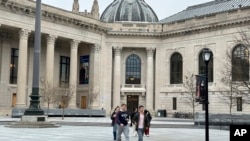
It’s tough to gain admission to Yale University, and it’s getting even tougher for international students as standout students from around the world set their sights on Yale.
The Yale Dale News, the campus newspaper, takes a look at the situation here.
- By VOA News
Student from Ethiopia says Whitman College culture made it easy to settle in

Ruth Chane, a computer science major from Ethiopia, writes about her experiences settling into student life at Whitman College in the U.S. state of Washington.
"The community at Whitman College made sure I felt welcomed even before I stepped foot on campus," she says.
- By VOA News
Claremont Colleges student gets a shock when she heads home to Shanghai
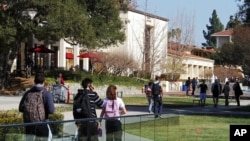
In The Student Life, the student newspaper for the Claremont Colleges, a consortium of five liberal art colleges and two graduate schools in Claremont, California, student Rochelle Lu writes about readjusting to her Shanghai home after spending a semester in the United States.
- By VOA News
Cedarville University aims to ease transition for international students
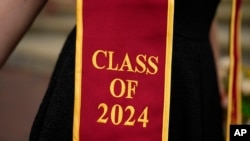
Cedarville University in the U.S. state of Ohio says it’s got more than 140 international students representing 44 countries.
Here, the school interviews Jonathan Sutton, director of international student services. He talks about his job and the opportunities for international students on campus.
- By VOA News
Morehouse College offers prospective students tips on applying and thriving
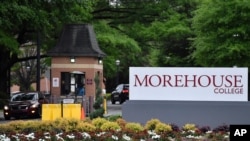
Morehouse College, a private, historically Black liberal arts college in the U.S. state of Georgia, offers a guide for international students interested in attending the school.
Among the tips to apply and thrive at Morehouse:
- Take advantage of the school’s orientation program
- Turn to the school’s Center for Academic Success for tutoring, support and more
- Immerse yourself in campus life via clubs and societies
- By Reuters
US reviews Columbia University contracts, grants over antisemitism allegations

The administration of President Donald Trump said on Monday it will review Columbia University's federal contracts and grants over allegations of antisemitism, which it says the educational institution has shown inaction in tackling.
Rights advocates note rising antisemitism, Islamophobia and anti-Arab bias since U.S. ally Israel's devastating military assault on Gaza began after Palestinian Hamas militants' deadly October 2023 attack.
The Justice Department said a month ago it formed a task force to fight antisemitism. The U.S. Departments of Health and Education and the General Services Administration jointly made the review announcement on Monday.
"The Federal Government's Task Force to Combat Anti-Semitism is considering Stop Work Orders for $51.4 million in contracts between Columbia University and the Federal Government," the joint statement said.
The agencies said no contracting actions had been taken yet.
"The task force will also conduct a comprehensive review of the more than $5 billion in federal grant commitments to Columbia University."
The agencies did not respond to requests for comment on whether there were similar reviews over allegations of Islamophobia and anti-Arab bias.
Columbia had no immediate comment. It previously said it made efforts to tackle antisemitism.
College protests
Trump has signed an executive order to combat antisemitism and pledged to deport non-citizen college students and others who took part in pro-Palestinian protests.
Columbia was at the center of college protests in which demonstrators demanded an end to U.S. support for Israel due to the humanitarian crisis caused by Israel's assault on Gaza. There were allegations of antisemitism and Islamophobia in protests and counter-protests.
During last summer's demonstrations around the country, classes were canceled, some university administrators resigned and student protesters were suspended and arrested.
While the intensity of protests has decreased in recent months, there were some demonstrations last week in New York after the expulsion of two students at Columbia University-affiliated Barnard College and after New York Governor Kathy Hochul ordered the removal of a Palestinian studies job listing at Hunter College.
A third student at Barnard College has since been expelled, this one related to the occupation of the Hamilton Hall building at Columbia last year.
Canada’s immigration overhaul signals global shift in student migration
From Europe to North America, nations are tightening their immigration policies. Now Canada, long seen as one of the world's most welcoming nations, has introduced sweeping changes affecting international students. The reforms highlight a growing global trend toward more restrictive immigration policies. Arzouma Kompaore reports from Calgary.
Trump administration opens antisemitism inquiries at 5 colleges, including Columbia and Berkeley
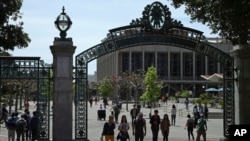
The Trump administration is opening new investigations into allegations of antisemitism at five U.S. universities including Columbia and the University of California, Berkeley, the Education Department announced Monday.
It's part of President Donald Trump's promise to take a tougher stance against campus antisemitism and deal out harsher penalties than the Biden administration, which settled a flurry of cases with universities in its final weeks. It comes the same day the Justice Department announced a new task force to root out antisemitism on college campuses.
In an order signed last week, Trump called for aggressive action to fight anti-Jewish bias on campuses, including the deportation of foreign students who have participated in pro-Palestinian protests.
Along with Columbia and Berkeley, the department is now investigating the University of Minnesota, Northwestern University and Portland State University. The cases were opened using the department's power to launch its own civil rights reviews, unlike the majority of investigations, which stem from complaints.
Messages seeking comment were left with all five universities.
A statement from the Education Department criticized colleges for tolerating antisemitism after Hamas' Oct. 7, 2023, attack on Israel and a wave of pro-Palestinian protests that followed. It also criticized the Biden administration for negotiating "toothless" resolutions that failed to hold schools accountable.
"Today, the Department is putting universities, colleges, and K-12 schools on notice: this administration will not tolerate continued institutional indifference to the wellbeing of Jewish students on American campuses," said Craig Trainor, the agency's acting assistant secretary for civil rights.
The department didn't provide details about the inquiries or how it decided which schools are being targeted. Presidents of Columbia and Northwestern were among those called to testify on Capitol Hill last year as Republicans sought accountability for allegations of antisemitism. The hearings contributed to the resignation of multiple university presidents, including Columbia's Minouche Shafik.
An October report from House Republicans accused Columbia of failing to punish pro-Palestinian students who took over a campus building, and it called Northwestern's negotiations with student protesters a "stunning capitulation."
House Republicans applauded the new investigations. Representative Tim Walberg, chair of the Education and Workforce Committee, said he was "glad that we finally have an administration who is taking action to protect Jewish students."
Trump's order also calls for a full review of antisemitism complaints filed with the Education Department since Oct. 7, 2023, including pending and resolved cases from the Biden administration. It encourages the Justice Department to take action to enforce civil rights laws.
Last week's order drew backlash from civil rights groups who said it violated First Amendment rights that protect political speech.
The new task force announced Monday includes the Justice and Education departments along with Health and Human Services.
"The Department takes seriously our responsibility to eradicate this hatred wherever it is found," said Leo Terrell, assistant attorney general for civil rights. "The Task Force to Combat Anti-Semitism is the first step in giving life to President Trump's renewed commitment to ending anti-Semitism in our schools."
- By VOA News
STEM, business top subjects for international students
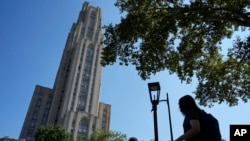
The Times of India breaks down the most popular subjects for international students to study in the U.S.
STEM and business lead the pack. Read the full story here. (January 2025)
- By VOA News
Safety and visa difficulties among misconceptions about US colleges

U.S. News & World report addresses some of the misconceptions about U.S. colleges and universities, including the difficulty of getting a visa.
Read the full story here. (January 2025)
- By VOA News
Work opportunities help draw international students to US schools
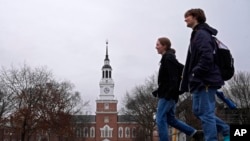
US News & World Report details the three top factors in foreign students' decision to study in the U.S. They include research opportunities and the reputation of U.S. degrees. Read the full story here. (December 2024)
- By VOA News
British student talks about her culture shock in Ohio
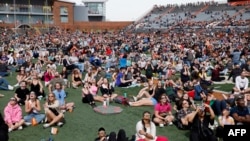
A British student who did a year abroad at Bowling Green State University in Ohio talks about adjusting to life in America in a TikTok video, Newsweek magazine reports.
Among the biggest surprises? Portion sizes, jaywalking laws and dorm room beds.
Read the full story here. (December 2024)
- By VOA News
Harvard's Chan School tells international students what to expect
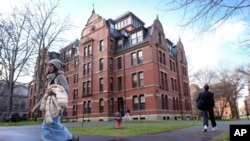
Harvard's T.H. Chan School of Public Health reaches out to international students by detailing the international student experience at the school.
Learn more about housing, life in Boston and more here.
- By Reuters
China unveils plan to build 'strong education nation' by 2035
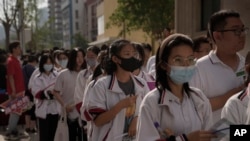
China issued its first national action plan to build a "strong education nation" by 2035, which it said would help coordinate its education development, improve efficiencies in innovation and build a "strong country."
The plan, issued Sunday by the Communist Party's central committee and the State Council, aims to establish a "high quality education system" with accessibility and quality "among the best in the world."
The announcement was made after data on Friday showed China's population fell for a third consecutive year in 2024, with the number of deaths outpacing a slight increase in births, and experts cautioning that the downturn will worsen in the coming years.
High childcare and education costs have been a key factor for many young Chinese opting out of having children, at a time when many face uncertainty over their job prospects amid sluggish economic growth.
"By 2035, an education power will be built," the official Xinhua news agency said, adding that China would explore gradually expanding the scope of free education, increase "high-quality" undergraduate enrolment, expand postgraduate education, and raise the proportion of doctoral students.
The plan aims to promote "healthy growth and all-round development of students," making sure primary and secondary school students have at least two hours of physical activity daily, to effectively control the myopia, or nearsightedness, and obesity rates.
"Popularizing" mental health education and establishing a national student mental health monitoring and early warning system would also be implemented, it said.
It also aims to narrow the gap between urban and rural areas to improve the operating conditions of small-scale rural schools and improve the care system for children with disabilities and those belonging to agricultural migrant populations.
The plan also aims to steadily increase the supply of kindergarten places and the accessibility of preschool education.
- By VOA News
A look at financial aid options for international graduate students in US
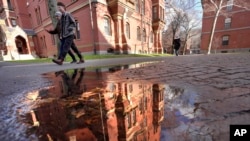
The Open Notebook, a site focusing on educating journalists who cover science, has complied a list of U.S. graduate program financial aid information for international students.
